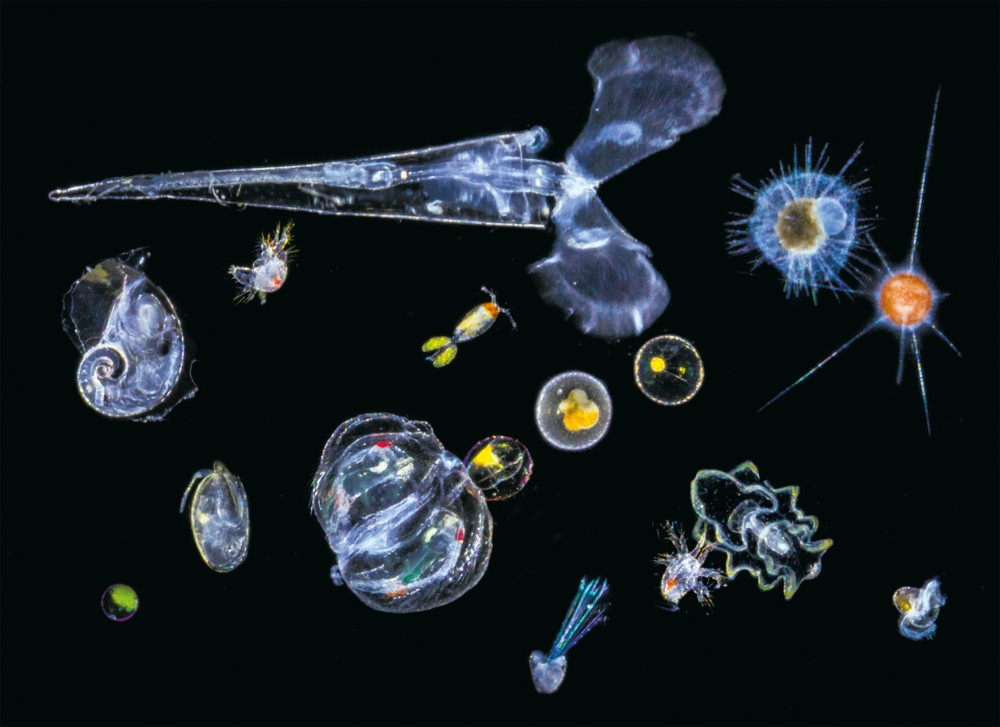Rewinding back to a couple days ago, we were introduced to the organisms that dominate the seas and oceans – plankton. While some would associate the word “plankton” with the green single-eyed creature from Spongebob, there is a MUCH greater variety of plankton in the ocean, the 5000+ species differ in shapes and sizes all the way to phylum. This diversity is due to the fact that a plankter is any drifting organism that lives in the pelagic zone and is subject to current flow. Although many plankton are invisible to the naked eye, they are a crucial part of underwater habitats. Sitting at the bottom of the food web, they are the building blocks of our marine ecosystems. They provide a food source for our smallest invertebrates to even our largest animal on Earth, the Blue Whale.

A way to categorize these fascinating beings is by tropic level, with the two main groups being phytoplankton and zooplankton. Phytoplankton (or “plant plankton”) are unicellular algae, living near the water surface where there is sufficient sunlight to undergo photosynthesis. This group of unicellular algae includes cyanobacteria, diatoms, coccolithophores and dinoflagelletes. Zooplankton (or “animal plankton”) are protozoans, mostly single celled and feed on phytoplankton. Eggs and larvae of larger animals are included in this group.
The best part about our time at Shoals is that learning goes beyond the classroom, perfectly exemplified by the plankton tow on our boat trip that following afternoon. After collecting our specimen, we returned to the lab to observe our sampling with some help from the microscopes. With just a droplet of seawater in our glass slide, my partner Alex and I hunted around the one inch square for any sign of life. The first organism that we came across was part of the zooplankton group. While we initially thought the plankton was a type of worm, but a closer look (and some help from our local fish expert and TA Noah) revealed that it was actually a fish larvae. We then noticed the neighboring organisms, and discovered that the two other plankton were earlier stages of the fish larvae we found, showing clearly a chronological view of larval development. Needless to say we were amazed at this lucky coincidence.



Vicky Fong